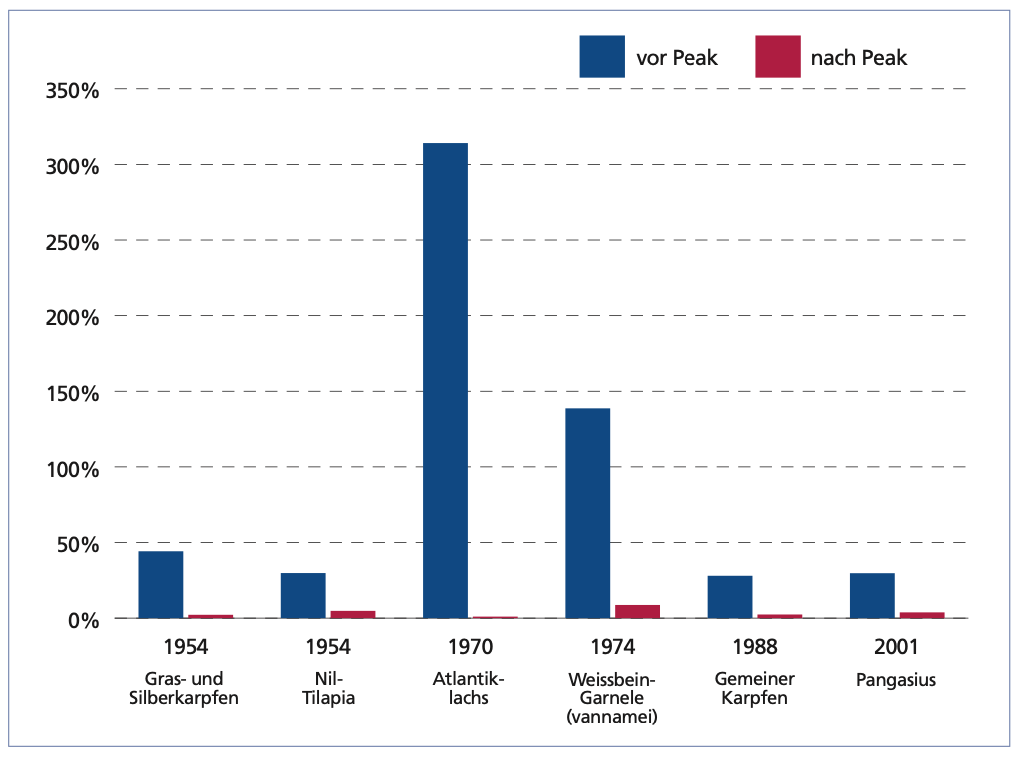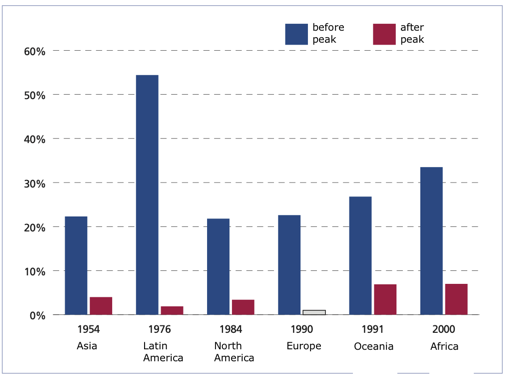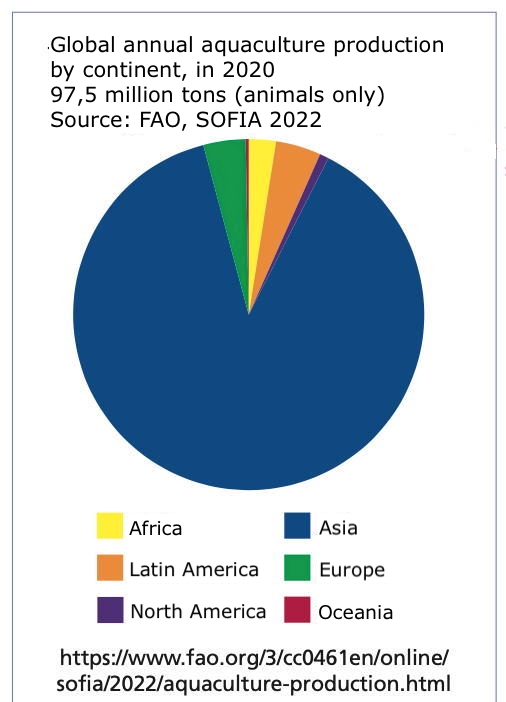Farmed fish account for more than half of all fish meals worldwide, and have done so since 2013 [1]. In 1974, the aquaculture share of fish consumption was only seven percent [2]. In 2020, when a total of 177.8 million tonnes of aquatic animals were killed, aquaculture accounted for 87.5 million tonnes and wild-caught 90.3 million tonnes, of which 20.4 million tonnes were used as feed for animal fattening, mainly in aquaculture [1].
 The decrease in aquaculture growth for six selected species, each averaged over the five years before and after the year with the highest growth (peak). [3]
The decrease in aquaculture growth for six selected species, each averaged over the five years before and after the year with the highest growth (peak). [3]
Fish farming reaches its limits
The enormous growth of aquaculture since the 1950s led to the assumption that aquaculture would continue to grow and would be able to cover the increasing fish consumption per person in the future, despite stagnating catch yield since the 1990s.


The lopsided geographical distribution of global aquaculture production [1, Table 7].
Sources:
[1] UN Food and Agriculture Organization (FAO): The State of World Fisheries and Aquaculture 2022 (SOFIA).
[2] FAO, SOFIA 2018
[3] U. Rashid Sumaila et al: Aquaculture over-optimism? Frontiers in Marine Science, 2022
Graphics: Billo Heinzpeter Studer (data selection), Annemarie Gantenbein/ satzbild (graphics)



Kommentare
Kommentare deaktiviert.
Möchten Sie etwas zu diesem Beitrag sagen oder fragen? Kontaktieren Sie uns! (mail@fair-fish.net)
Would you like to comment or ask something regarding this article? Just contact us! (mail@fair-fish.net)